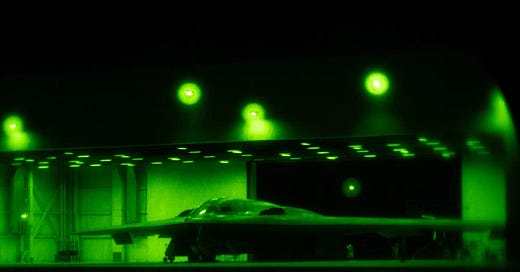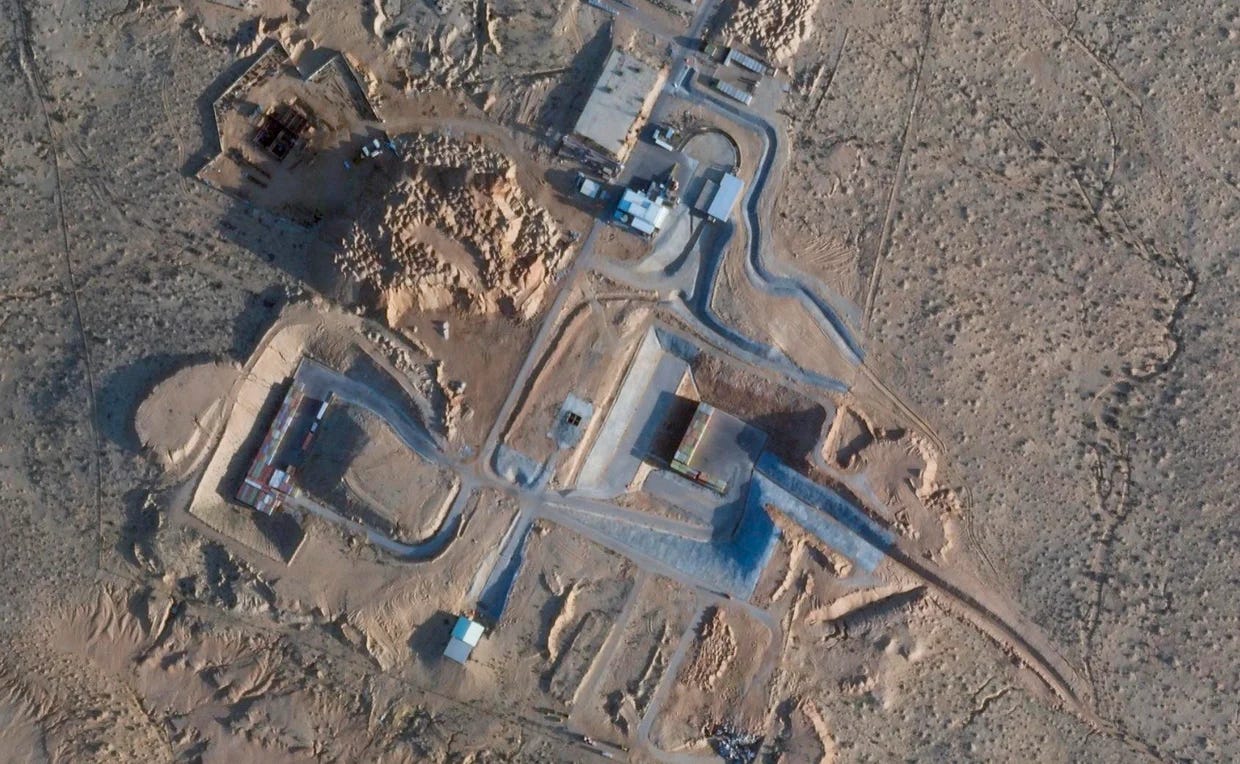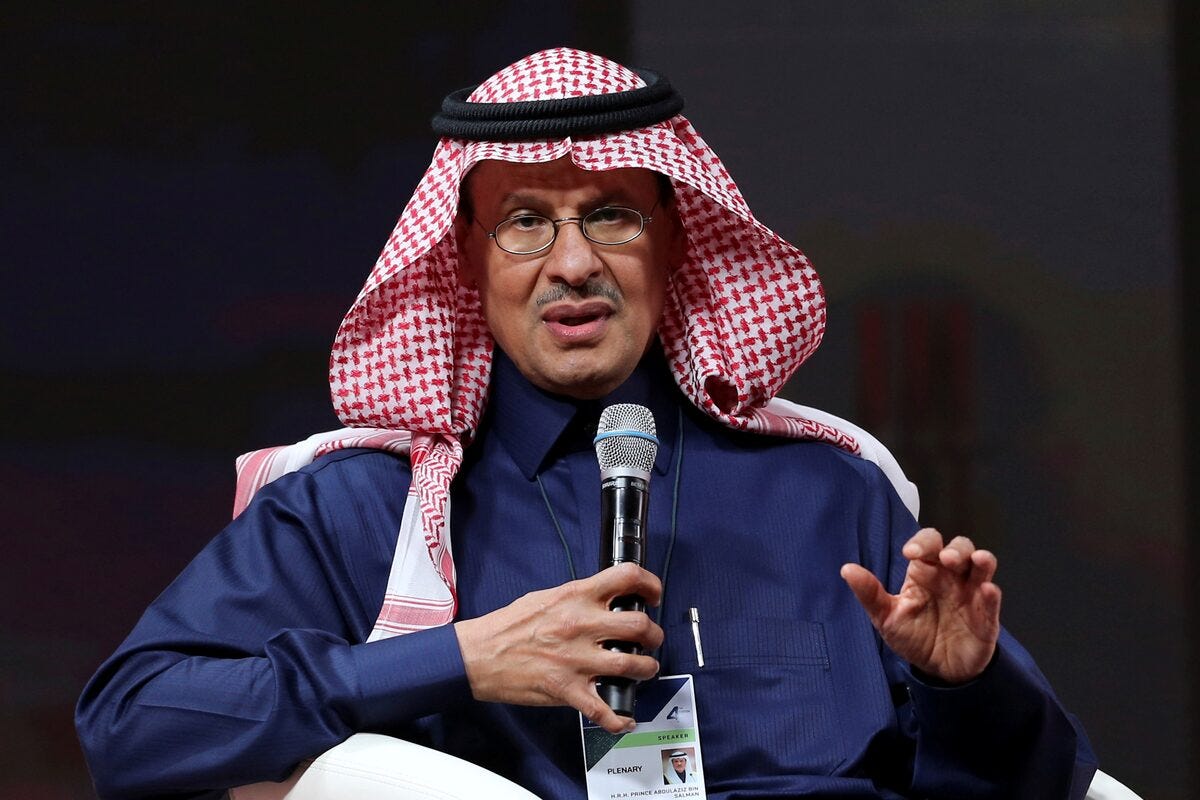A complete assessment of the damage from American strikes on three Iranian nuclear facilities will require considerable time. But that's just the beginning of our uncertainties.
The bigger story is what these strikes could unleash: a Middle Eastern nuclear arms race that was already simmering beneath the surface.
The American bombardment served as the capstone to a twelve-day Israeli-led offensive that targeted multiple nuclear installations and killed at least 14 nuclear scientists. Commercial satellite images released over the weekend indicate that Iran's ability to design, manufacture, and test nuclear technologies has sustained significant harm.
But the images, along with US intelligence assessments, suggest that Iran's nuclear program has been set back temporarily — not "completely and totally obliterated," as President Donald Trump claimed. Despite the president's triumphant declarations about Operation Midnight Hammer, parts of Iran's nuclear program may remain largely intact. They could include the country’s stockpiles of enriched uranium, which it may have moved to secret locations in advance of the strikes, and the centrifuges it uses for enrichment activity, some of which may still function.
Rafael Mariano Grossi, head of the International Atomic Energy Agency, the UN's nuclear watchdog, said in an interview on Sunday that Iran still has the "knowledge" and "industrial capacity" to resume at least some uranium enrichment activities "in a matter of months."
"The capacities they have are there," he said. "Frankly speaking, one cannot claim that everything has disappeared and there is nothing there."
Meanwhile, there is widespread concern that Iran might withdraw from the Nuclear Non-Proliferation Treaty (NPT), which obligates it not to develop nuclear weapons and to submit to inspections of its civilian nuclear sites. A withdrawal from the treaty would enable Tehran, should it decide, to pursue nuclear weapons development without international monitoring.
"Iran has been a few months away from a nuclear weapon since about 2007. It's clear that the thing that keeps them a few months away is not their technical capacity; it's their political will," said arms control Jeffrey Lewis. "And I think whatever loss in technical capacity they have suffered, it is more than compensated for by an increase in political will."
It isn’t just the political will in Iran that has changed, though. The US strikes have fundamentally altered the nuclear calculus across the Middle East.
How Iran changes the calculus
The strikes have created a paradox: by demonstrating the limitations of military action against nuclear programs, they may have made nuclear weapons more attractive to other powers in the Middle East, not less.
Consider four strategic lessons from Operation Midnight Hammer:
One: even the most sophisticated military strike can only temporarily set back a nuclear program. This teaches regional powers that nuclear programs require redundancy, secrecy, and hardening to survive potential attacks — but that they remain achievable.
Two: the strikes highlighted the vulnerability of civilian nuclear infrastructure. Every country in the region with nuclear ambitions now knows their facilities could become targets. This creates incentives for covert programs, underground facilities, and rapid weaponization capabilities.
Three: the international response has been muted and inconsistent. While the US and Israel claim success, independent experts analyzing satellite imagery say the nation's long-running nuclear enterprise is far from destroyed. This demonstrates that the international community lacks consensus on preventing proliferation through force.
Four: the Iranian case offers a stark lesson about nuclear weapons as the ultimate deterrent. Iran's conventional defenses proved weak against Israeli attacks, reinforcing the logic that only nuclear weapons can guarantee regime survival.
The lesson of Ukraine also looms large here. After the Cold War ended, Ukraine inherited nuclear weapons from the Soviet Union. But it gave them up in 1994, under the Budapest Memorandum, in exchange for security assurances from the US, the UK, and Russia — assurances that proved worthless when Russia invaded in 2014 and again in 2022. As analysts at the Brookings Institution wrote in 2022, the lesson was: "If you have nuclear weapons, keep them. If you don't have them yet, get them, especially if you lack a strong defender like the US as your ally and if you have a beef with a big country that could plausibly lead to war."
Nuclear experts have spent a long time thinking about this moment — not just the tactical details of bunker-buster bombs hitting hardened facilities, but the strategic implications of what comes next. A nuclear arms race in the Middle East wouldn’t just threaten regional stability — it would multiply the risks of nuclear terrorism, create new targets for hostile regimes, and increase the chances that nuclear weapons will fall into the wrong hands during the chaos of regional conflicts.
The global nuclear landscape
Nine countries currently possess nuclear weapons: Russia, the United States, China, France, the United Kingdom, Pakistan, India, Israel, and North Korea. These states have roughly 12,331 nuclear warheads, with over 9,600 in active military stockpiles, according to a 2025 report by the Federation of American Scientists. Russia and the United States still control about 87 percent of all nuclear weapons globally. China's nuclear arsenal is growing faster than any other country’s. The Stockholm International Peace Research Institute (SIPRI) estimates that China now has at least 600 nuclear warheads.
The total number of warheads represents a significant decline from the approximately 70,000 warheads at the peak of the Cold War. But Dan Smith, director of SIPRI, warns that the growing number of conflicts threatening countries worldwide is reversing that downward trend.
Unlike the nuclear competition of the 20th century, which centered on two superpowers, the United States and Russia, today's proliferation pressures are coming from different regions, with multiple countries involved. They are likely to result in permanent arsenals, as regional powers make nuclear weapons a part of their security strategies. "Instead of planning for nuclear disarmament, the nuclear-armed states appear to plan to retain large arsenals for the indefinite future," notes the Federation of American Scientists. The era of nuclear reductions is over. We're entering an age of nuclear expansion — and the Middle East is ground zero.
The Middle East’s nuclear players
Israel remains the Middle East’s sole nuclear power, maintaining what experts call "nuclear opacity" — neither confirming nor denying its arsenal. According to the Federation of American Scientists and SIPRI, Israel has an estimated 90 nuclear warheads and enough fissile material to produce up to hundreds more. Israel is one of five countries that never signed the NPT, alongside India, Pakistan, and North Korea — which all have nuclear arsenals of their own — as well as South Sudan.
The strikes on Iran haven't diminished Israel's nuclear ambitions — they've likely accelerated them. Satellite photos show new construction at Dimona, Israel’s nuclear weapons development site in the Negev Desert, over the past five years, and SIPRI reported this year that Israel "appeared to be upgrading a reactor site there to produce plutonium," which like uranium can be used to make a nuclear bomb. If Iran can begin to rebuild its program in months rather than years, as intelligence assessments suggest, Israel will want to ensure its nuclear deterrent remains credible and technologically advanced.
Saudi Arabia could present a new proliferation risk.
Crown Prince Mohammed bin Salman was explicit in an interview with Fox News in 2023: "If Iran developed a nuclear bomb, we will follow suit as soon as possible." Bin Salman also said that his country would "have to get" a nuclear weapon if Iran did so.
The kingdom has been laying the groundwork for civil nuclear power for years. It has large deposits of uranium ore, from which it could produce over 90,000 metric tons of uranium. “We will enrich it and we will sell it,” Energy Minister Prince Abdulaziz bin Salman announced in January of this year. “We will do a ‘yellowcake’” — a reference to the uranium concentrate used to prepare reactor fuel.
Even more concerning are persistent reports of Saudi–Pakistani nuclear cooperation. The BBC reported that "Saudi Arabia has funded nuclear weapons development in Pakistan, and the Saudi government believes that it can gain nuclear weapons at will." Western diplomats and intelligence agencies have long believed that an agreement exists in which Pakistan would sell Saudi Arabia nuclear warheads and its own nuclear technology should security in the Middle East deteriorate.
The Saudis continue to resist signing a so-called 123 agreement with the US (after Section 123 of the US Atomic Energy Act), in which countries receive assistance from the US with their peaceful nuclear energy programs in exchange for swearing off uranium enrichment and reprocessing of reactor fuel — two routes that have the potential to culminate in nuclear weapons.
The Iran strikes have likely entrenched the Saudi nuclear strategy. If the US strike proves only temporarily effective and Iran rebuilds its program, then Saudi Arabia's strategic calculus favors moving quickly toward its own nuclear capability.
The next tier: UAE, Egypt, and Turkey
The United Arab Emirates has positioned itself as the responsible actor, the first Middle Eastern country to adopt the so-called gold standard of renouncing enrichment and reprocessing. It is the only Arab state that has a 123 agreement with the US, and it became the first Arab state to operate a nuclear power plant when it opened the South Korean–built Barakah facility in 2021. It is now planning a second nuclear plant with four new reactors.
But even the UAE might choose to hedge its bets. The Institute for Science and International Security (ISIS) warns that the UAE "will be a country to watch for reversing course on its pledge" if regional security deteriorates further and other countries seek a nuclear weapons program. The Iran strikes have demonstrated that even civilian nuclear infrastructure can become a target, a lesson likely not lost on Abu Dhabi's strategic planners. Israel hit Iran’s Arak heavy water reactor, which Iran says is used for peaceful purposes but has the potential to produce plutonium.
Turkey presents what ISIS calls "the greatest risk as far as surprise proliferation,” warning that under President Erdogan “the risk is substantial that Turkey will seek advanced nuclear capabilities in order to have comparable power to Iran.” Turkey is currently building its first nuclear power plant, using a Russian model, and is negotiating for a second plant with Russian, South Korean, and US vendors.
And Egypt has “the most experience” of these three countries “in working with nuclear materials and facilities under efforts dating back decades,” ISIS says. Egyptian officials have privately told the group that, while Egypt “abandoned” its former ambition “to match Israel's nuclear weapons, it would be unlikely to continue to resist obtaining nuclear weapons if Iran obtained them."
Uncharted territory
The uncomfortable reality is that we may be approaching a “nuclear cascade“ — the rapid spread of nuclear weapons capabilities across a region in response to perceived threats. The Iran strikes may have temporarily disrupted Tehran's program, but they may have also convinced other regional powers that nuclear weapons are both necessary and achievable.
If so, the question isn't whether this nuclear cascade will happen — it's how many countries will join it, how quickly, and whether the international community can establish new frameworks for managing a multipolar nuclear Middle East. The old approaches of military strikes and diplomatic pressure are proving insufficient for the challenges ahead.
The real test of American foreign policy won't be measured in the rubble of Iranian nuclear facilities, but in whether we can prevent the region from spiraling into a destabilizing arms race that makes everyone less secure.












